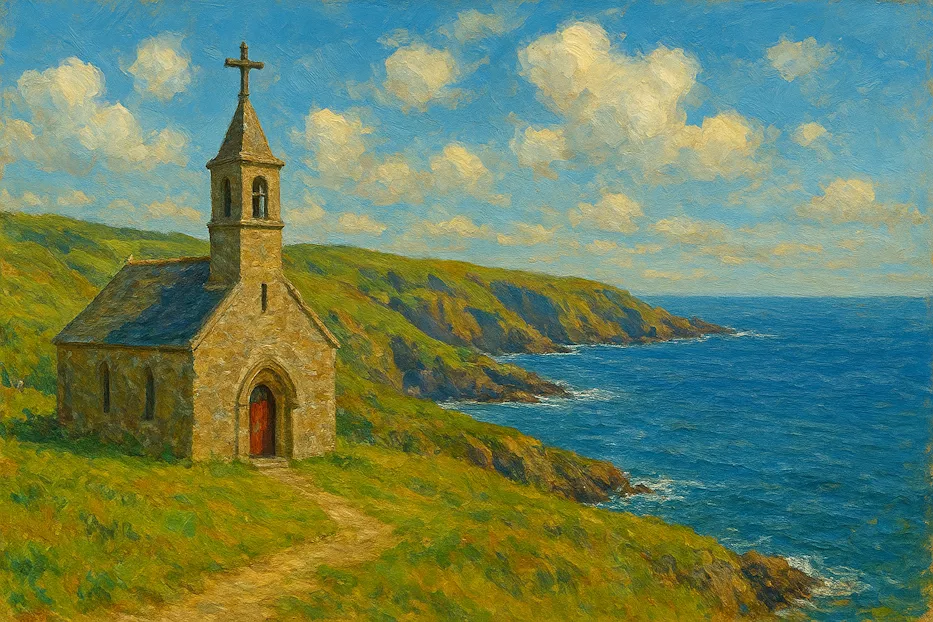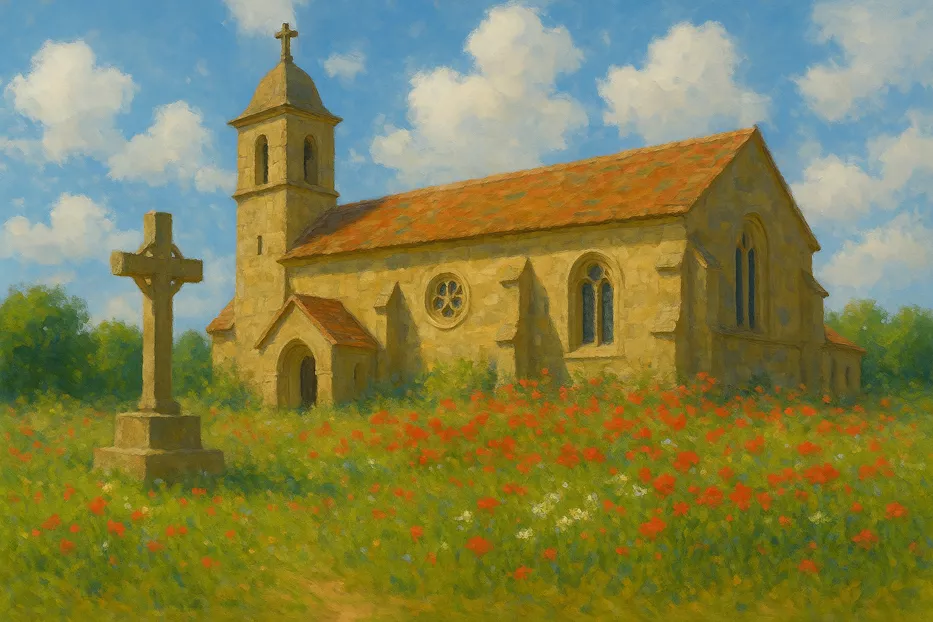Ireland is the only Catholic island country in Northern Europe.
That simple sentence carries a story of geography, conquest, stubbornness, and faith — a story no other island in the northern seas can tell.
Table of Contents
At the Edge of the Map, Faith Took Root Early
By the time Rome’s empire had built and abandoned London, Ireland was still beyond the frontier — untouched by conquest yet ready for conversion. In the fifth century, missionaries like Patrick — not the myth but the man — kindled a faith that grew organically rather than imperially. Ireland’s early monasteries became beacons of learning while much of northern Europe was still pagan.
Isolated yet intellectually restless, the island turned faith into culture. Monks copied manuscripts, carved crosses into stone, and sent missionaries to Scotland, France, and Germany. “To be Irish was to be Christian,” one historian wrote — and to be Christian was, naturally, to be Catholic.
That head start mattered. When the Reformation thundered through northern Europe a thousand years later, Ireland’s Catholic identity was already deep in its soil.
When Reformation Arrived, It Wore a Crown
Elsewhere in northern Europe, Protestantism spread as a renewal; in Ireland, it arrived as an occupation.
The English crown, newly Protestant under Henry VIII, tried to remake Ireland’s religion by decree. The “Church of Ireland” was declared the official church; its bishops were appointed by London; Irish lands were handed to Protestant settlers.
But Protestantism never became native here. For Irish Catholics, it was the faith of landlords and soldiers, not neighbors and kin. Mass went underground, priests hid, and the Irish language became a vessel for Catholic ritual and resistance.
In Scandinavia, the Reformation fused with national identity. In Ireland, it fused with colonial resistance. That divergence explains much of what came after.
The Penal Years: A Church Under Siege, Yet Enduring
From the late 17th to the early 19th centuries, the Penal Laws punished Irish Catholics for being Catholic, barring them from land ownership, education, and political life.
And yet, paradoxically, those same laws strengthened the Church’s emotional hold. When faith becomes illegal, it becomes identity. Mass was whispered at dawn on hillsides; schools were hidden behind hedgerows. The priest, hunted yet trusted, became both spiritual leader and symbol of survival.
By the time Catholic emancipation arrived in 1829, Ireland’s faith was no longer just religion. It was defiance made sacred.
Catholicism as a National Language
No other northern island made its religion a form of national self-definition. Iceland and the Nordic countries established Lutheranism as their state religion centuries earlier; the Isle of Man, Orkney, and Shetland followed Anglican Britain.
But in Ireland, Catholicism became the language of nationhood. Daniel O’Connell’s campaign for emancipation mobilized millions in the name of both faith and liberty. Later, during the independence movement, the Church’s rituals and the republic’s aspirations intertwined.
The rosary and the tricolor marched side by side. Even for secular revolutionaries, Catholicism offered the architecture of Irishness — shared symbols, shared stories, shared suffering.
When the Republic of Ireland emerged in 1922, its constitution would not formally establish Catholicism, but the social order was unmistakably shaped by it. The Church ran schools, hospitals, charities; its moral codes governed family law. For decades, bishops and politicians were partners in defining what it meant to be Irish.
No other island nation in Northern Europe followed that path. Ireland alone — geographically northern but spiritually southern — remained under Rome’s sign.
A Singular Northern Exception
In the map of Europe’s faiths, Ireland sits as a strange outlier.
To the north, Scandinavia remains largely Lutheran by heritage, even if secular by practice.
To the east, there are the Baltics: Lithuania fiercely Catholic, yes, but not an island; Latvia mixed Lutheran and Catholic; Estonia largely secular or Lutheran.
To the west, Britain is officially Anglican; Scotland Presbyterian; Iceland Lutheran.
In short: within the family of northern island nations, only Ireland stands under Rome’s shadow.
Malta, Sicily, and the Azores are Catholic too — but they belong to the sunlit South, not the windswept North. Ireland’s Catholicism is colder, older, more political. It is the lone Latin faith anchored in a northern sea.
A Church That Built — and Bound — a Nation
Through the mid-20th century, Catholicism wasn’t simply religion; it was infrastructure. Schools, hospitals, charities — all bore the imprint of the Church. The priest was the social worker, teacher, and moral compass of the village.
But that dominance came at a cost. The Church’s power restricted personal freedoms and silenced dissent. Divorce, contraception, and abortion were outlawed. Unwed mothers were hidden away; children were shamed or institutionalized.
Catholicism bound the nation together — and bound many of its people in guilt.
When the economy opened and education expanded in the 1980s and ’90s, the dam burst. Then came the revelations: decades of abuse, neglect, and cover-ups. The moral institution that had once represented resistance to oppression now stood accused of its own.
And yet, the paradox endures: even after disillusionment, Catholic identity remains a default setting. Census after census shows a majority still claiming it, even as belief thins. Faith has become cultural memory — worn lightly, but not gone.
Geography’s Quiet Role
Geography gave Ireland its independence of spirit long before it achieved political sovereignty. The Atlantic shielded it from easy conquest, even as proximity to Britain ensured constant tension.
That balance — isolation and entanglement — explains much. The Reformation triumphed in places where monarchs could enforce it. Ireland, colonized but never wholly subdued, never internalized it. Its distance made conversion optional, and its oppression made resistance holy.
Ireland’s Catholicism, then, is not an accident of piety. It is the outcome of centuries of defiance shaped by terrain.
Secular, Yet Still Catholic
Modern Ireland looks nothing like the Ireland of its grandparents. Same-sex marriage is legal; abortion rights have been won by referendum; the Church’s grip on education is loosening.
And yet, scratch the surface and the inheritance remains. Baptisms and funerals fill churches even among the unaffiliated. Catholic holidays still shape the calendar; Catholic ethics still echo in debates on dignity, life, and justice.
Irish secularism is not French laïcité or Nordic indifference — it’s a negotiation with a living ghost. The Church’s vocabulary still lingers in the way people speak of guilt, charity, even irony.
The Meaning of Being the Only One
So, why is Ireland the only Catholic island country in Northern Europe?
- Because history made religion political, and politics made religion personal.
- Because when other islands reformed by royal order, Ireland refused to.
- Because its isolation let Catholicism survive; its colonization made it resist.
- Because faith became not the mark of obedience, but the emblem of opposition.
That combination — geography, rebellion, endurance — has no northern twin.
Faith as Memory, Not Dogma
Today’s Ireland is post-Catholic but not anti-Catholic. It remembers its monasteries, its missionaries, its martyrs — and also its scandals, silences, and wounds. The Church no longer defines the nation, but the nation cannot be understood without it.
In a Europe where religion has faded into heritage, Ireland’s relationship to Catholicism is still emotional. It’s complicated, contradictory, occasionally tender.
And that is what makes it fascinating: not that it’s “the last Catholic island,” but that it’s the only Catholic island country in Northern Europe. Here, Catholicism was not empire but endurance. Not conquest but continuity.
An island faith at the edge of an empire — and at the edge of belief.


